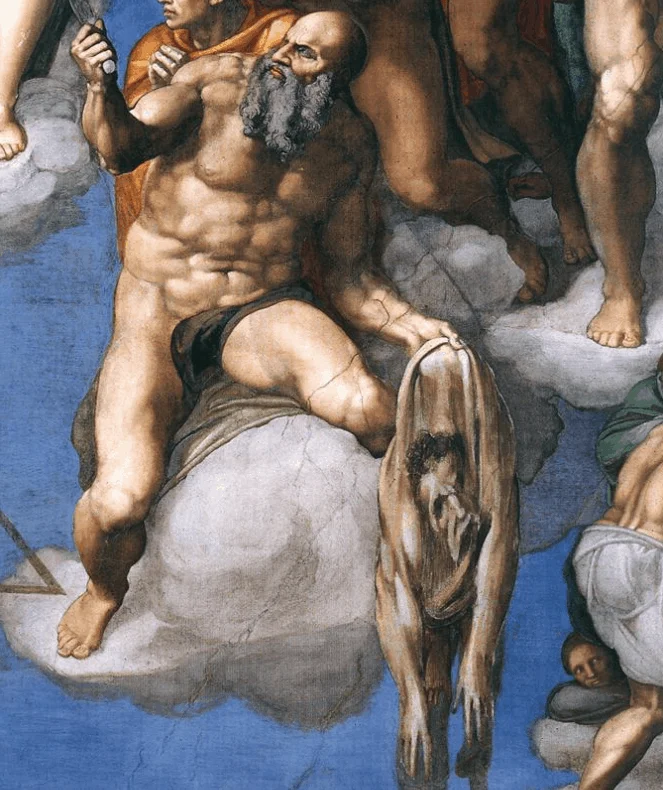It’s one of his most famous works of art, located in one of the most magical places in the world.
In this post, you’ll discover the ultimate list of facts about The Last Judgement, one of the ultimate masterpieces by Michelangelo, one of the most famous artists of the Renaissance.
1. The Last Judgement is a huge fresco
The Last Judgement is located in the Sistine Chapel in Vatican City, a chapel in the Apostolic Palace, the official residence of the Pope. It’s also the final attraction in the Vatican Museum, one of the largest public art museums in the world which has numerous wonderful paintings on display.
And what an attraction it is! The Last Judgement Fresco has dimensions of 13.7 × 12 meters (539.3 × 472.4 inches) and covers the entire altar wall of the chapel!

2. It took Michelangelo 5 years to complete it
With this knowledge, it’s easy to conclude that he didn’t paint this immense fresco overnight. The wall had been prepared in the year 1535 and he started painting in 1536.
The original idea of the work was already conceived in 1533 though, but Michelangelo was mainly a sculptor and only reluctantly accepted the commission.
Another obstacle was the existing art because an altarpiece of the Assumption of Mary by Pietro Perugino already decorated the wall above the altar. This was eventually removed to be replaced by The Last Judgement.
It would take Michelangelo 5 years to complete the work in 1541 and he was 67 at the time.
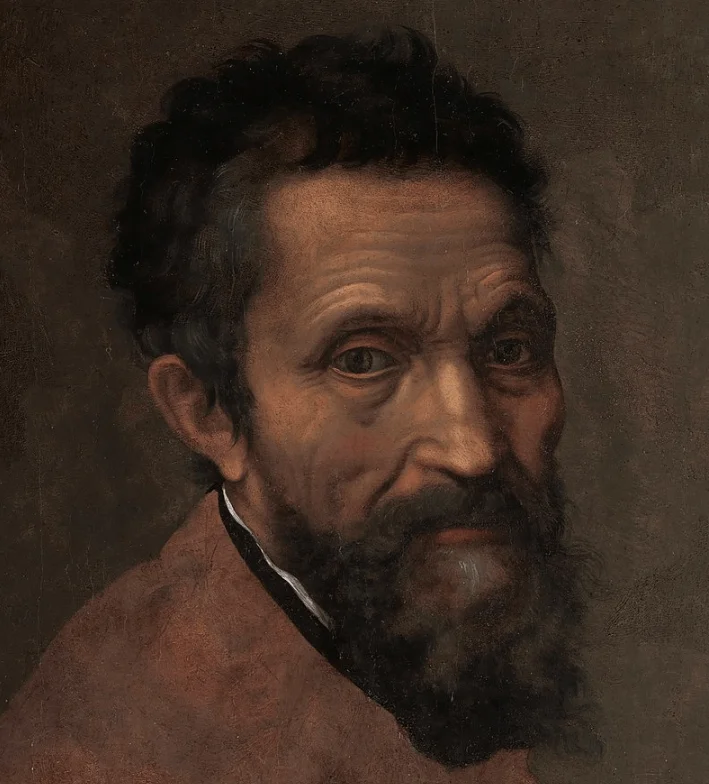
3. He started working on it 25 years after he completed the ceiling
He only reluctantly accepted the commission because it wasn’t the first time he was asked to create a fresco in the Sistine Chapel. 25 years earlier, he painted the magnificent fresco on the Sistine Chapel’s ceiling.
Between 1508 and 1512 he created one of the ultimate masterpieces of the Renaissance which includes one of the best-recognized paintings of all time, The Creation of Adam.
Perhaps he remembered lying down on a scaffold for 4 years to create this amazing work of art, and the immense discomfort he felt during this period?

4. It was originally commissioned by Pope Clement VII
The Popes in the early 16th century were serious art lovers. Pope Julius II alone commissioned dozens of works that would become world-famous works in the centuries that followed up until today, including the famous Raphael rooms which include “The School of Athens.”
Pope Clement VII wasn’t different as he was the one who commissioned what would be considered the most famous painting in the world for over 300 years, “The Transfiguration” by Raphael, one of his ultimate masterpieces.
It was Pope Clement VII who originally commissioned the work, but he passed away in 1534, over a year before Michelangelo would start painting.

5. The assistant of the new pope didn’t fancy the nudity in the painting
One of the main reasons that Michelangelo accepted the commission was that he was given permission to use his fantasy while painting the fresco. This resulted in extremely muscular bodies that were nearly all completely naked.
The successor of Clement VII was Pope Paul III and he had an assistant named “Biagio da Cesena” who commented on the painting on an inspection before it was completed:
“it was most disgraceful that in so sacred a place there should have been depicted all those nude figures, exposing themselves so shamefully, and that it was no work for a papal chapel but rather for the public baths and taverns.”
Michelangelo wasn’t fond of criticism and he immediately got his revenge by painting da Cesena as Minos, one of the damned who is descending to hell in the bottom right corner.
An additional goof, he painted da Cesena with donkey ears!
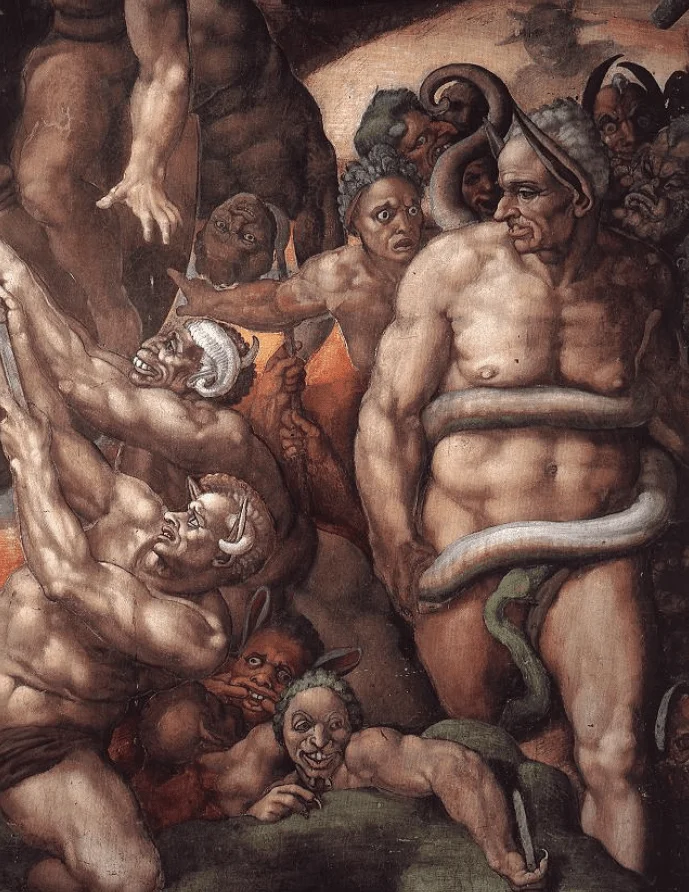
6. The nudity was covered by another painter
One of the most remarkable facts about The Last Judgement is that most of the nudity was covered by drapery later on by another painting named Daniele da Volterra.
Because he was such an admirer of Michelangelo, he reluctantly accepted this task but only made small changes, angering the people who wanted to see all of the nudity removed.
Over the centuries, many painters have been given a similar task, but all of the changes made after the 16th century have been removed in a restoration conducted between 1990 and 1994.
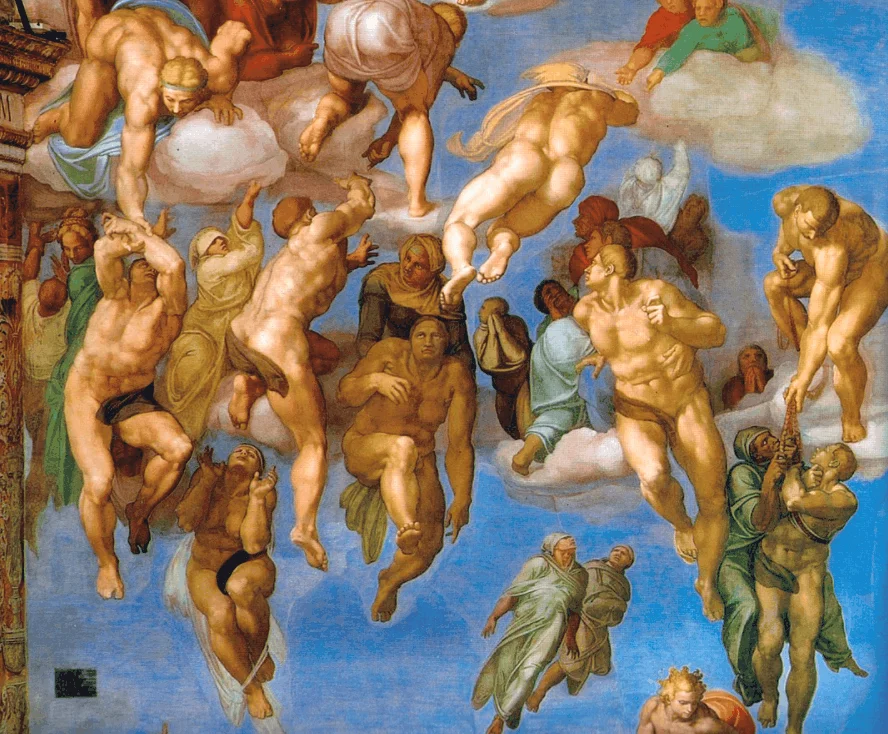
7. Two figures were repainted for a very particular reason
Another “scandalous image” that Daniele da Volterra had to repaint was that of Saint Catherine and Saint Blaise, who appeared to be having sexual intercourse in the original.
Therefore, da Volterra completely chiseled away Saint Blaise and part of the image of Saint Catherine (you probably know which part) to make the image appear “decent.”
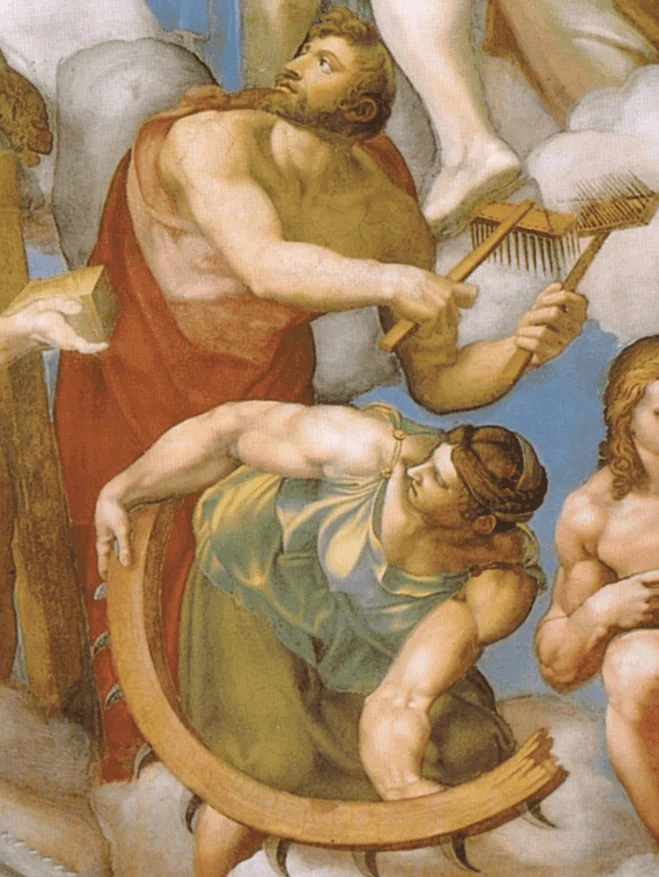
8. Many art historians think that the depicted bodies are way too muscular
The criticism about the way that the bodies are depicted in The Last Judgement isn’t limited to contemporary critics. It also applies to modern art historians who believe that the bodies are way too muscular and distract from the general message that the painting attempts to convey.
British art historian Kenneth Clark made the comment on the depiction of Christ that “Michelangelo has not tried to resist that strange compulsion which made him thicken a torso until it is almost square.”
American art historian Sydney Joseph Freedberg comments on the overall composition of the painting that “The vast repertory of anatomies that Michelangelo conceived for the Last Judgment seems often to have been determined more by the requirements of art than by compelling needs of meaning, meant not just to entertain but to overpower us with their effects.”
Regardless of these observations, The Last Judgement is still considered to be one of Michelangelo’s best works, especially since the restoration of the 20th century revealed that the color schemes unify the entire scene in more ways than initially thought.

9. There are over 300 figures in the painting
One of the most amazing facts about The Last Judgement is that there are over 300 figures depicted in the entire scene. While this is pretty astounding, this also makes the fresco a bit chaotic as there’s a lot going on.
But then again, it’s not easy to depict the Second Coming of Christ together with the judgment of God of all humanity, don’t you think?

10. The lucky ones are on the left, the unlucky ones on the right
The painting depicts the traditional view of the people ascending to heaven on the left, and the people descending to hell on the right in the lower part of the painting, while Christ and Mary are depicted in the center surrounded by saints.
In the top section, the lucky people who are saved meet with the inhabitants of heaven.
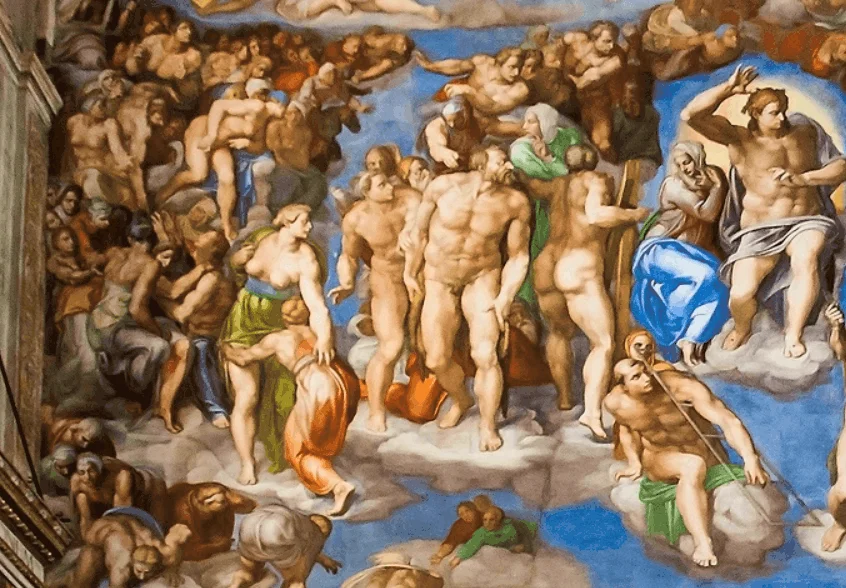
11. Michelangelo painted himself in a very peculiar way
One of the weirdest facts about The Last Judgement is that Michelangelo depicted himself in a very strange way. Historians generally agree that he depicted his own face into the flayed skin of Saint Bartholomew.
British art historian Edgar Wind describes this as “a prayer for redemption, that through the ugliness the outward man might be thrown off, and the inward man resurrected pure.”
He surely didn’t pay homage to himself here, right?
